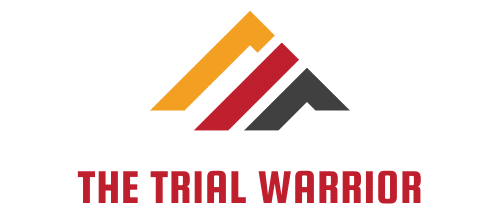Horseback riding is a physically demanding sport that requires excellent balance, control, and coordination. One of the crucial areas that often gets overlooked in this discipline is the importance of core stability. A stable core can significantly influence the rider’s performance, posture, and the amount of strain placed on the lower back. This article aims to dive deep into the significance of core stability for horse riders, specifically focusing on how it can prevent lower back pain.
The Connection between Core Stability and Horse Riding
Before we delve into the meat of the matter, you may ask yourselves, "What exactly does our core have to do with horse riding?" The answer lies in the intrinsic connection between core stability and balance. The core muscles, which include the abdominal, pelvic, and lower back muscles, are the primary players responsible for maintaining the body’s stability and control.
A lire également : What’s the Best Approach to Skill Acquisition for Novice Archers?
When you’re on a horse, your core acts as your primary stabilizer. It helps keep your body upright, supports your spine, and allows you to adjust your posture based on the horse’s movement. A strong and stable core allows for better control over the horse, leading to enhanced performance and less risk of injury.
If your core is weak or unstable, the burden of maintaining balance and control shifts to other parts of the body, primarily your lower back and legs. This shift can lead to excessive strain on these areas, which can eventually result in pain or injury.
Cela peut vous intéresser : How Can Motor Learning Theories Be Applied to Enhance Skills in Table Tennis?
The Impact of Core Stability on Lower Back Pain
Lower back pain is a common issue among horse riders. Often, it’s the result of poor posture, improper riding technique, or insufficient core strength. By strengthening your core and improving stability, you can significantly reduce the occurrence of lower back pain.
A robust core supports the spine, ensuring that the spinal column remains aligned and the back muscles aren’t excessively strained. When the core is weak, the lower back tends to overcompensate, leading to muscle strain and, subsequently, pain.
Moreover, a strong core enhances posture and body control during horse riding, which reduces the stress placed on your lower back. It enables you to move fluidly with the horse’s movement, preventing the jarring impact that can often aggravate your back.
Core Strengthening Exercises for Horse Riders
Now that we’ve established the importance of core stability in preventing lower back pain, let’s discuss some exercises that will help strengthen your core. These exercises not only improve core stability but also enhance your overall riding performance.
-
Planks: Planks are a fantastic exercise for targeting your entire core. They work your abs, back, and pelvic muscles all at once. To perform a plank, get down into a push-up position, but rest your forearms on the ground instead of your hands. Hold this position for as long as you can, keeping your body straight from head to heels.
-
Russian Twists: This exercise targets your oblique muscles, which are crucial for lateral stability. Sit down on the floor with your knees bent and feet flat. Lean back slightly, keeping your back straight. Hold a weight with both hands, and twist your torso to the left, bringing the weight towards the left side. Repeat on the right side.
-
Dead Bug: This exercise works your abs, back, and pelvic floor muscles. Lie flat on your back with your arms reaching towards the ceiling. Lift your legs so your knees are bent at 90 degrees. Slowly lower your right arm and left leg towards the floor, then bring them back up. Repeat with your left arm and right leg.
The Role of Body Awareness in Horse Riding
Body awareness, or proprioception, plays a significant role in effective horse riding. It refers to your understanding of your body’s position and movement in space. With good body awareness, you can better control your body’s movement, maintain balance on the horse, and prevent unnecessary strain on your lower back.
To improve body awareness, focus on exercises that require balance and coordination. Yoga, Pilates, and even simple exercises like balancing on one leg can help enhance your body awareness.
Moreover, try to develop a conscious understanding of your posture and body alignment while riding. Notice how your back, hips, and legs align, and how your core engages during different horse movements.
Understanding the role of core stability in preventing lower back pain can significantly improve your horse riding experience. By focussing on core strengthening exercises and enhancing your body awareness, you can prevent back pain, improve your riding performance, and enjoy a more harmonious ride with your horse.
The Science Behind Core Stability in Lower Back Pain Prevention
Delving deeper into the science behind core stability and how it can prevent lower back pain, a large number of studies verify its importance. These studies, accessible on platforms like Google Scholar, highlight the correlation between core strength and postural control, crucial elements for horseback riders.
Core stability plays a central role in athletic performance, particularly in sports that require balance and coordination, such as horseback riding. The core muscles function as the body’s center of gravity, and they are involved in almost all movements of the body. This means that any activity that challenges your balance, like horseback riding, heavily relies on these muscles.
A control group study involving athletes and horses discovered that core stability is directly related to athletes’ rankings in events. The study found that riders with better core stability had higher rankings in events, reinforcing the idea that a robust core supports improved performance.
Furthermore, core stabilization exercises have been shown to reduce incidences of lower back pain in riders. A study involving a pre-post test of horse riders found that a core training regime significantly reduced self-reported levels of low back pain. Core strengthening exercises, therefore, not only improve performance but also contribute to overall health and wellbeing of horse riders.
Conclusion: Harnessing the Power of Core Stability in Horse Riding
In conclusion, it is clear that core stability plays a vital role in horseback riding, influencing not just the rider’s performance but also their health. The strength and stability of the core muscles significantly impact balance, control, and coordination, all essentials for a successful ride. Moreover, a strong core can effectively prevent lower back pain, a common issue among riders.
Incorporating core strengthening exercises such as planks, Russian twists, and the Dead Bug into your routine can significantly enhance your core stability. In addition, focusing on body awareness can further assist in aligning your body correctly, preventing unnecessary strain on your lower back.
Overall, understanding the importance of core stability and actively working to enhance it can provide a multitude of benefits for horseback riders. Not only can it improve your rankings in events, but it can also make your riding experience more enjoyable and pain-free. So, before you mount your horse next time, remember to engage your core and align your posture right for the perfect ride. Your lower back will thank you for it.











